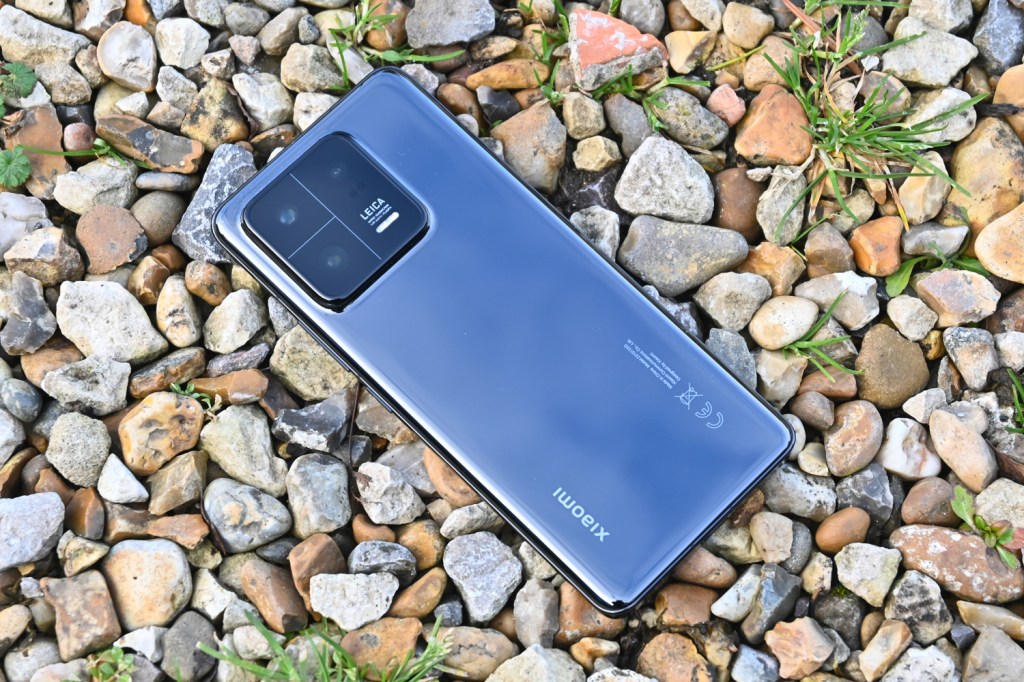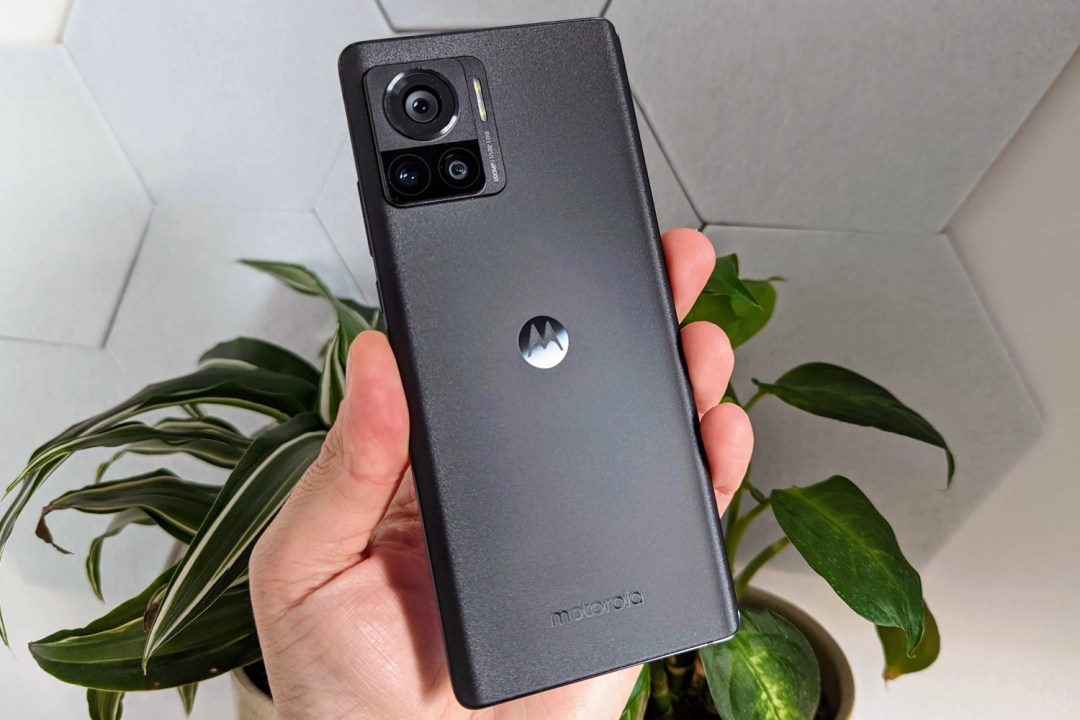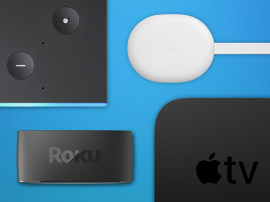Best Android phone 2024: smartphones from Google, Samsung and more reviewed
Which Google-powered blower should you buy? We've reviewed the best Android phones around

In the market for an Android upgrade? Competition has never been stiffer, with all manner of makers vying for your prestigious pocket space – making selecting the best Android phone a tricky task.
With every phone under the sun wanting to be named the best smartphone on sale, you might feel spoilt for choice. We’re here to help. We’ve tested all of the latest Android handsets and rated our favourites in the list below. That includes premium flagships from the likes of Google, Samsung and Sony, plus a handful of more affordable Android alternatives.
Whether you’re ready to shell out on a top-end telephone or shopping for maximum value from a mid-range mobile, the list below will help you find your ideal Android phone.
What’s the best Android phone?
We think the Samsung Galaxy S24 Ultra (buy now) is the best Android phone you can buy today. It is superlative in almost every respect, from design to display and performance… add on the S-Pen stylus and some clever AI additions, and this is a fantastic all-rounder.
Other Android phone recommendations
The OnePlus Nord 2T (buy now) is a neatly designed 5G smartphone with solid specs at a very fair price.
The Google Pixel 8 Pro (buy now) continues Google’s run of phenomenal phone photography and is more AI-assisted than ever, but the 8 Pro isn’t a value champ like previous Pixels.
The Google Pixel 7a (buy now) is a wallet-friendly winner with an excellent camera and all of Google’s AI smarts.
The OnePlus Open (buy now) has a lower price and brilliant build – it’s the finest foldable we’ve seen yet.
The best Android phones you can buy today:

1. Samsung Galaxy S24 Ultra
Stuff Verdict
Jam-packed with premium features, Samsung’s range-topping S24 Ultra is all the Android smartphone you could want – and then some
Pros
- Titanium frame and Gorilla Armor glass set new toughness standards
- Unrivalled performance
- On-device AI is useful
Cons
- Cameras haven’t progressed much in twelve months
- So expensive
| Samsung Galaxy S24 Ultra specs | |
|---|---|
| Screen | 6.7in 2796×1290 OLED HDR, 460ppi |
| Processor | A17 Pro |
| RAM | 8GB |
| Storage | 256GB/512GB/1TB56GB/512GB/1TB |
| Software | iOS 17 |
| Cameras | 48+12+12MP (rear), 12MP (front) |
| Battery | 4,441 mAh (est.) |
| Dimensions | 76.7×159.9×8.25mm, 221g |
Want the ultimate Android smartphone experience, the Samsung Galaxy S24 Ultra is your best option. Clad in Gorilla Glass Armor glass set in a titanium frame, it feels equal parts premium and rugged in the hand. Its sizeable 6.8in AMOLED display is sublime on the eyes, and finally swaps curved edges for a flat panel. That makes it a perfect pairing to the bundled S Pen stylus.
Productivity is also boosted by genuinely helpful on-device AI abilities. Performance elsewhere is peerless, courtesy of a Snapdragon 8 Gen 3 CPU running at higher speeds than any rival. The Ultra simply whizzes through almost every app, task and game. The top-spec S24 gets an overhauled zoom camera, with a higher pixel count sensor and 5x optical zoom doing a better job in low light than last year’s model, although the 200MP main snapper, 12MP ultra-wide and 10MP 3x zoom stay the same. That means rivals have caught up, and in some cases exceeded, Samsung for picture quality. There’s very little in it, though.
You’ll pay handsomely for the privilege of squeezing an S24 Ultra into your pocket. But if you’re willing to do so, your reward will be the best Android smartphone you can buy right now.
- Read more: Samsung Galaxy S24 Ultra review

2. Google Pixel 8 Pro
Stuff Verdict
It continues Google’s run of phenomenal phone photography and is more AI-assisted than ever, but the 8 Pro isn’t a value champ like previous Pixels.
Pros
Cons
| Google Pixel 8 Pro specs | |
|---|---|
| Screen | 6.7in, 1440×3120 LTPO OLED, 120Hz |
| Processor | Google Tensor G3 |
| RAM | 12GB |
| Storage | 128/256/512GB |
| Software | Android 14 |
| Cameras | 50+48+48MP (rear), 10.5MP (front) |
| Battery | 5000mAh |
| Dimensions | 163x77x8.8mm, 213g |
This year’s Pro-grade Pixel has climbed firmly into flagship territory, with a higher price to go with its top-tier cameras and undeniably slick styling. The Pixel 9 Pro is all metal and frosted glass, with the distinctive camera shelf setting it apart.
Algorithm-assisted shooting modes help its three rear cameras deliver fantastically detailed images in all conditions, raising the already high photographic bar set by its predecessors. The Tensor G3 silicon might not match Qualcomm’s top chips for raw power, but multitasking is a breeze, and Android 14 is wonderfully smooth in action. With a 5000mAh cell, battery life is no longer a footnote, while the palm-spanning 6.7in OLED display delivers impeccable contrast, vibrant colours and dynamic refresh rates.
- Read more: Google Pixel 8 Pro review

3. OnePlus 11
Stuff Verdict
Offering a killer combo of specs, design and price point, OnePlus hits another home run with its latest Android flagship
Pros
Cons
| OnePlus 11 specs | |
|---|---|
| Screen | 6.7in, 1440×3216 AMOLED, 120Hz |
| Processor | Qualcomm Snapdragon 8 Gen 2 |
| RAM | 8/12/16GB |
| Storage | 128/256/512GB |
| Software | Android 13 with OxygenOS |
| Cameras | 50+32+48MP (rear), 16MP (front) |
| Battery | 5000mAh |
| Dimensions | 163x74x8.5mm, 205g |
The latest OnePlus flagship ditches the Pro moniker, but that doesn’t mean it can’t still compete with the big boys. An all-screen frontage is very much in the modern mobile mould, while the firm’s classic alert slider remains present and correct. The sizeable circular camera bump at the back is home to three capable lenses, plus Hasselblad branding which hints at enhanced shooting modes. Low-light performance has improved from last year, while daylight snaps are sharp and colourful.
Its 6.7in display looks simply brilliant, with consistent brightness and colour complemented by dynamic refresh rates of up to 120Hz. Performance is unsurprisingly ace, while battery life proves impressively frugal. If you can handle its heft, the OnePlus 11 is a truly top-drawer device.
- Read more: OnePlus 11 review

4. Google Pixel 7a
Stuff Verdict
A wallet-friendly winner that pretty much means there’s no reason to buy the pricier Pixel 7
Pros
- Fantastic still images for a mid-range phone
- Performance punches above its price bracket
- Slick design and strong build
Cons
- Price bump over last year’s effort
- Charging speeds remain behind rivals
| Google Pixel 7a specs | |
|---|---|
| Screen | 6.1in, 1080×2400 OLED, 90Hz |
| Processor | Google Tensor G2 |
| RAM | 8GB |
| Storage | 128GB |
| Software | Android 13 |
| Cameras | 64+13MP (rear), 13MP (front) |
| Battery | 4,385mAh |
| Dimensions | 153x72x9mm, 193g |
A streamlined vision of vanilla Android excellence, the Pixel 7a is yet more proof that Google makes the best Google phones. With a design distilled from its premium Pixel siblings, the 7a goes easier on your wallet without cutting corners. Its composite construction does a convincing impression of glass, while the shelf styling ties it into the Pixel family.
A Tensor G2 CPU inside stomps on almost everything in the same price bracket, running undiluted Android 13 without a stutter. It also continues Google’s track-record of camera excellence, using both a high pixel count sensor and powerful algorithms to extract impressively detailed stills. A 90Hz refresh rate means the screen is a big step up over last year’s Pixel 6a, too.
- Read more: Google Pixel 7a review

5. Xiaomi 13 Pro
Stuff Verdict
A no-compromise flagship with a simply stunning set of cameras, the Xiaomi 13 Pro is up there with the very best phones this year has seen so far.
Pros
- Impeccable image quality from every camera
- Flagship performance and decent battery life
- Top-tier curved AMOLED screen
Cons
- MIUI can still be heavy-handed with power optimisation
- Quite a chunky handset
- Polished finish gets mucky fast
| Xiaomi 13 Pro specs | |
|---|---|
| Screen | 6.73in, 1440×3200 LTPO AMOLED, 120Hz |
| Processor | Qualcomm Snapdragon 8 Gen 2 |
| RAM | 8/12GB |
| Storage | 128/256/512GB |
| Software | Android 12 with MIUI |
| Cameras | 50+50+50MP (rear), 32MP (front) |
| Battery | 4820mAh |
| Dimensions | 163x75x8.7mm, 229g |
With a giant 1-inch main camera and Leica-assisted portrait telephoto as backup, the Xiaomi 13 Pro is an exceptionally well-rounded mobile shooter. It’s also packing a capable ultrawide that doubles as a macro lens, so there’s little it can’t capture. Made from premium materials like ceramic, it looks every bit the flagship too.
An impeccable display, the latest Qualcomm silicon and some mighty impressive charging times put it up there with the very best in the Android world. It also undercuts the rival Samsung Galaxy S23 Ultra by a fair margin, making it a very tempting choice for anyone who’s not fussed about S Pen scribbles.
- Read more: Xiaomi 13 Pro review

6. Sony Xperia 1 V
Stuff Verdict
Unapologetically premium, Sony’s no-compromise flagship excels with an exceptional feature set, cementing its position as the ultimate Android camera phone
Pros
- All the manual modes a pro snapper or videographer could want
- Stunning screen and great sound
- Last of the old guard for fan favourite features
Cons
- Cameras not as point-and-shoot friendly as rivals
- Charging speeds are merely average
- Serious money
| Sony Xperia 1 V specs | |
|---|---|
| Screen | 6.5in, 1644×3840 OLED, 120Hz |
| Processor | Qualcomm Snapdragon 8 Gen 2 |
| RAM | 12GB |
| Storage | 256GB |
| Software | Android 13 |
| Cameras | 52+12+12MP (rear), 12MP (front) |
| Battery | 5000mAh |
| Dimensions | 165x71x8.2mm, 185g |
Sony’s top-spec smartphones aren’t for everyone. But if you’re happy to pay for the privilege, the Xperia 1 V is a phenomenally capable Android handset. A flagship in all respects, it delivers exceptional performance, a cinematic 4K display and day-long battery life, all wrapped up in distinctively slick packaging.
Android puritans will be pleased by its light-touch interface, but photographers are the true target market: rapid burst shooting, expansive manual options and stellar image quality make it a win for serious snappers. As well as a continuous optical zoom lens, which lets you get closer to subjects without the need for digital trickery, it benefits from an all-new main sensor that fares better in low light. Photography fans with deep pockets won’t be disappointed.
- Read more: Sony Xperia 1 V review

7. Nothing Phone 2
Stuff Verdict
A beautiful big-screen blower with unique style and plenty of substance. Rivals have it beat in one or two areas, but none have Phone 2’s charm.
Pros
- Refines everything that Made Phone 1 so fun
- Dependable performance and battery life
- Streamlined software puts a fresh spin on the Android home screen
Cons
- Not such great value in certain territories
- Rivals still hold the crown for photography
| Nothing Phone 2 specs | |
|---|---|
| Screen | 6.7in, 2410×1080 LTPO AMOLED, 120Hz |
| Processor | Qualcomm Snapdragon 8+ Gen 1 |
| RAM | 8/12GB |
| Storage | 128/256/512GB |
| Software | Android 13 with NothingOS 2.0 |
| Cameras | 50+50MP (rear), 32MP (front) |
| Battery | 4700mAh |
| Dimensions | 162x76x8.6mm, 201g |
Nothing took everything we liked about the wallet-friendly Phone 1 and ramped it up a little bit for the sequel – without going into full-on flagship territory. Phone 2 is packing last year’s flagship CPU as a result, but that’s still plenty of performance for the cash.
Improvements have been made to pretty much every area: the screen is larger, with skinnier bezels; the battery is bigger, lasts longer and charges faster; the pair of 50MP rear cameras have uprated image processing; and NothingOS 2.0 is as cohesive and complete as any Android skin we’ve used this year. The Google Pixel 7 still edges it on the photography front, but for sheer pocket presence Phone 2 is a genuine alternative.
- Read more: Nothing Phone 2 review

8. OnePlus Nord 2T
Stuff Verdict
A neatly designed 5G smartphone with solid specs at a fair price: the Nord 2T is one of the best mid-range Android phones you can buy
Pros
- Everything is super quick
- The charging speed is brilliant
Cons
- Photo samples are mixed
- Not sure about the camera housing
| OnePlus Nord 2T specs | |
|---|---|
| Screen | 6.43in, 1080×2400 AMOLED, 90Hz |
| Processor | MediaTek Dimensity 1300 |
| RAM | 8/12GB |
| Storage | 128/256GB |
| Software | Android 12 with OxygenOS |
| Cameras | 50+8+2MP (rear), 32MP (front) |
| Battery | 4500mAh |
| Dimensions | 159.1×73.2×8.2mm, 190g |
Staying true to OnePlus’ classic value formula, the Nord 2T isn’t a massive upgrade over its predecessor. Instead, it tweaks the recipe to cement its rep as a formidable mid-range mobile. With a glass back impersonating more expensive handsets, the 2T benefits from a tidy design – apart from the inelegant camera rings on the rear.
Unchanged from the Nord 2 is its colourful OLED panel. Not the brightest nor the fastest around, its 90Hz refresh rates are smooth enough for everyday use. Results from the 50MP main Sony sensor remain reliably decent, while the 32MP selfie camera is a significant improvement. There’s no wireless charging, but 80W refuelling is a speedy selling point. And with MediaTek Dimensity 1300 silicon powering proceedings, software flies along too.
- Read more: OnePlus Nord 2T review

9. Motorola Edge 30 Ultra
Stuff Verdict
A rapid-charging powerhouse of a phone with a superb set of cameras… for a tantalising price
Pros
- Screen, style, performance and battery all deliver
- Capable, versatile cameras
- Exceptionally fast charging
Cons
- Sub-par waterproofing for a high-end phone
- No expandable storage, 3.5mm port
| Motorola Edge 30 Ultra specs | |
|---|---|
| Screen | 6.67in, 1080×2400 pOLED, 144Hz |
| Processor | Qualcomm Snapdragon 8+ Gen 1 |
| RAM | 8/12GB |
| Storage | 128GB/256GB/512GB |
| Software | Android 12 |
| Cameras | 200MP+50MP+12MP (rear), 60MP (front) |
| Battery | 4610mAh |
| Dimensions | 162x74x8.4mm, 199g |
It’s been a while since Motorola was top of the handset pack, but the new Motorola Edge 30 Ultra is a superb smartphone that wins back plenty of street cred for the Moto brand. It’s got practically everything going for it, including a premium build, a very capable camera setup (including a pixel-packed 200MP main camera and 60MP selfie cam), along with insanely nippy 125W fast charging. Oh, and a punchy pOLED display with a super-slick 144Hz refresh rate. Phew.
Our only minor gripes are the lack of a waterproof build and expandable storage. Zoom fans will also find the 2x optical zoom lacking. For everyone else though, this is an absolutely cracking handset, especially for the price. Well done Moto.
- Read more: Motorola Edge 30 Ultra review

10. OnePlus Open
Stuff Verdict
Lower price, brilliant build: the OnePlus Open is the finest foldable we’ve seen yet.
Pros
- Fabulously built
- High specification
- Brand new camera tech
Cons
- Cost is high, obviously
- Digital zoom a struggle in lower light
| OnePlus Open specs | |
|---|---|
| Screen | 7.82in, 2440×2268 AMOLED, 120Hz (main), 6.3in, 2484×1116 AMOLED, 120Hz (cover) |
| Processor | Qualcomm Snapdragon 8 Gen 2 |
| RAM | 16GB |
| Storage | 512GB |
| Software | Android 13 with OxygenOS 13 |
| Cameras | 48MP+64MP+48MP (rear), 20MP+32MP (main/front) |
| Battery | 4805mAh |
| Dimensions | 153x143x5.8mm (unfolded), 245g |
Oneplus came out of nowhere with the Open, bringing a fantastic form factor, superb snappers and some of the best software to truly take advantage of the large internal screen. That’s because the phone is badged as an Oppo Find N3 elsewhere in the world, with the parent company having tested the water with several foldable generations already.
It has great battery life, fast wired charging, and a fantastic design to boot. The fact this is cheaper than either of Samsung or Google’s efforts makes it something of a smartphone slam dunk. This really is the best folding phone you can buy.
- Read more: OnePlus Open review
If you’re looking to save money you can read Stuff’s guide to the best cheap smartphones.


